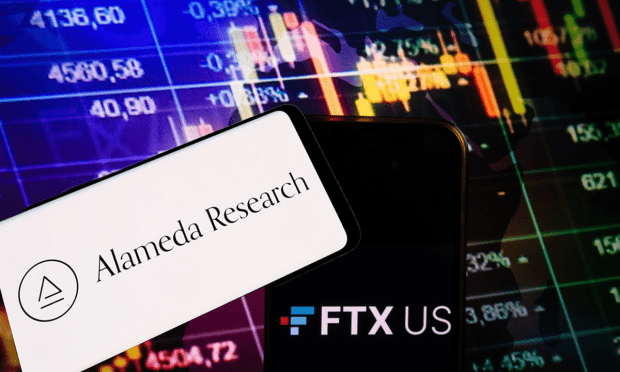How the Entangled CEOs of FTX and Alameda Took the Public for a Ride

At the heart of the FTX implosion, which has reportedly left nearly a million former customers and investors who trusted the exchange empty-handed, is the company’s complicated and compromised relationship with its sister trading firm, Alameda Research.
Both entities were founded by Samuel Bankman-Fried (aka SBF), the 30-year-old former billionaire who has been accused of using Alameda to front run token listings and even giving the trading firm special bypass privileges to FTX’s exchange.
As PYMNTS reported Monday (Nov. 14), the stunning implosion of FTX came about after it was revealed that the company used customer funds to bail out Alameda Research — to the tune of around $10 billion — after Alameda itself suffered heavy losses due to trading strategies dating back to April 2021. Exchanges must back their customer funds 1:1 to ensure and insure liquidity.
This operationally intimate relationship, which was subject to little if any financial controls, was what made it possible for Bankman-Fried and Alameda co-CEOs Sam Trabucco and Caroline Ellison to evaporate over $20 billion dollars of profits and deposits in less than a week.
How Is It Possible to Lose so Much Money?
Until a week ago, the widely believed and popularly held belief was that FTX and Alameda were both enormously profitable, thanks in no small part to the reverential treatment of the firms’ founder who was seen, by some, as the man who would bring cryptocurrency to the consumer and regulatory mainstream.
This belief in the solvency and success of FTX and Alameda was grounded in FTX’s high trading fees and large user trading volumes, SBF’s supposedly lucrative venture deals, and the cozy relationship between Alameda and FTX that gave Alameda an edge over other market makers on FTX, whom it was assumed were also making a large profit, just less of one than Alameda.
Was this all true? In a way, yes.
While SBF and Ellison both worked for a couple years at top trading firms, that experience did not make them expert traders, industry watchers say, much less expert or capable business administrators.
A Total Lack of Controls
In the end, it wasn’t the trading that took FTX down. It was the demanding realities of operating a large business that ended up being the undoing the “cool kids” running FTX and Alameda from their penthouse in the Bahamas.
To be sure, when the money was flowing, FTX spent heavily on advertisements, branding deals, endorsements and even a stadium naming pact. But unbeknownst to investors, when SBF was actively bringing in $420 million of fresh funding 13 months ago, The Wall Street Journal reports, he was concurrently cashing out three-quarters of the money to the tune of $300 million from selling a portion of his personal stake in FTX.
For a company grounded on the idea of giving back and “Effective Altruisim,” SBF’s conflicted two-sided dealings seem anything but.
It has also been reported that Alameda Research made $4.1 billion in combined loans to “related parties,” $1 billion of which went to SBF, with another $2.3 billion to Paper Bird Inc. a company he controlled, with an additional $543 million to FTX’s head of engineering, Nishad Singh, and the remaining $55 million to FTX Digital Markets’ head, Ryan Salame.
These are giant numbers, representing difficult-to-comprehend sums of cash. But when company executives only have a vague understanding of their own books, overlooking — or even ignoring — the severity and scale of the situation is much easier to do.
In the end, when the bill came due for Alameda, it couldn’t pay. The trading firm was in a truly sorry state of affairs, preliminary post-mortem analysis has shown, with incredible amounts of money lost to poor bookkeeping, arbitrary discretionary trades, internal mismanagement and incredibly poor organization.
Facing this multi-billion-dollar bind, as well as the risk of discovery, it has been widely reported that the trading firm used customer funds to cover the deficit.
A Tale of Two CEOs
From Enron to Bernie Madoff to Theranos and now FTX, scorched investors and a curious public always ask the same question: How could this happen?
SBF went to MIT, Sam Trabucco the co-CEO of Alameda Research did also, and Caroline Ellison went to Stanford. They all graduated with degrees in math and worked at impressive Wall Street firms. They should know numbers and financial models better than the average person.
But their backgrounds, while impressive, are really nothing exceptional. Thousands of twenty-somethings graduate from Stanford and MIT every year. Top trading firms hire hundreds of new employees yearly, most of whom are content to live comfortably in Connecticut while responsibly managing client portfolios.
The most likely, but at this point still speculative, scenario is that the kids — because that’s what they are in the eyes of many investment industry icons 2 and 3 times their age — lost their competitive trading edge as more players entered the market. After that, they lost a few big bets, made a few bad investments and the rest, of the reflexive death spiral of increasingly desperate attempts to backstop their losses, is history.
FTX and Alameda were riding a bubble, driven by VCs eager to get in on what looked to them like a growth industry with a global audience of retail “investors” hoping to make a killing on a new and exciting lottery ticket.
With fresh details on the inner workings of FTX still emerging multiple times a day, it’s safe to say the story and investigation are far from complete, especially the final chapter, where everyone gets their money back and lives happily ever after.
